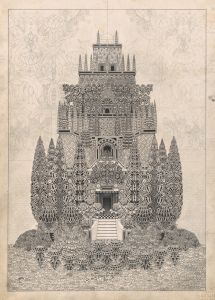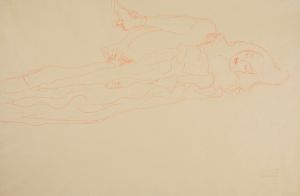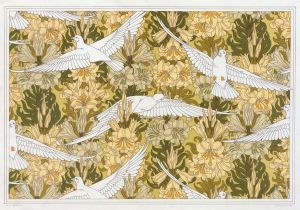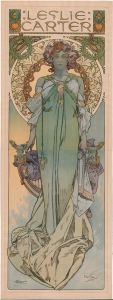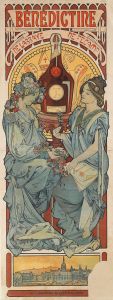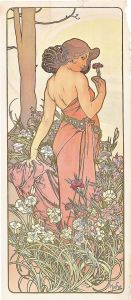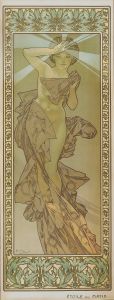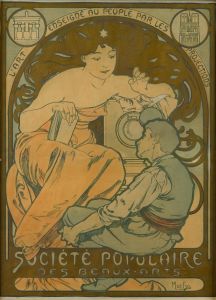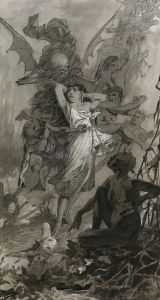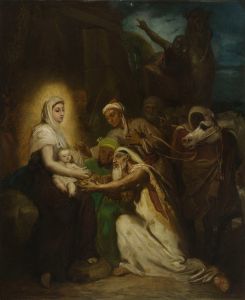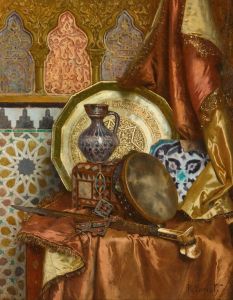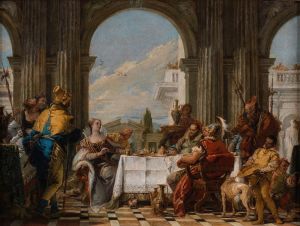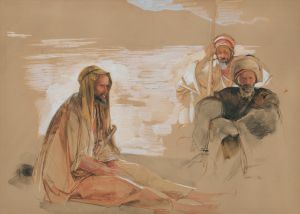
Woman With Headscarf And Star Medallion
A hand-painted replica of Alphonse Mucha’s masterpiece Woman With Headscarf And Star Medallion, meticulously crafted by professional artists to capture the true essence of the original. Each piece is created with museum-quality canvas and rare mineral pigments, carefully painted by experienced artists with delicate brushstrokes and rich, layered colors to perfectly recreate the texture of the original artwork. Unlike machine-printed reproductions, this hand-painted version brings the painting to life, infused with the artist’s emotions and skill in every stroke. Whether for personal collection or home decoration, it instantly elevates the artistic atmosphere of any space.
Alphonse Mucha, a Czech painter and decorative artist, is renowned for his distinctive style that became synonymous with the Art Nouveau movement. His works often feature beautiful women surrounded by lush, decorative elements and intricate patterns. One of his notable pieces is "Woman With Headscarf And Star Medallion," which exemplifies Mucha's signature style and thematic focus.
Alphonse Mucha was born on July 24, 1860, in Ivančice, Moravia, which is now part of the Czech Republic. He moved to Paris in 1887, where he became a prominent figure in the Art Nouveau movement. Mucha's work gained widespread recognition when he created a poster for the play "Gismonda," starring Sarah Bernhardt, in 1894. This success led to a six-year contract with Bernhardt and established Mucha as a leading artist of his time.
"Woman With Headscarf And Star Medallion" is a prime example of Mucha's artistic style. The artwork features a woman adorned with a headscarf, which is a recurring motif in Mucha's work, symbolizing both elegance and mystery. The star medallion adds a touch of celestial beauty, a common element in Mucha's compositions that often incorporate natural and cosmic themes.
Mucha's use of color and line is particularly noteworthy in this piece. The flowing lines and harmonious color palette create a sense of movement and grace, drawing the viewer's eye across the composition. Mucha's attention to detail is evident in the intricate patterns of the headscarf and the delicate features of the woman's face, showcasing his skill in capturing both beauty and emotion.
The Art Nouveau movement, which flourished from the late 19th century to the early 20th century, emphasized organic forms, curvilinear lines, and a sense of harmony between art and nature. Mucha's work epitomizes these principles, and "Woman With Headscarf And Star Medallion" is no exception. The artwork reflects Mucha's belief in the unity of art and life, where beauty is an integral part of everyday existence.
Mucha's influence extended beyond the realm of fine art. His designs were applied to a wide range of commercial products, including posters, advertisements, and decorative panels. This accessibility helped popularize the Art Nouveau style and made Mucha's work widely recognizable. His ability to blend fine art with commercial design set a precedent for future generations of artists and designers.
In addition to his commercial success, Mucha was deeply committed to his Czech heritage and national identity. He returned to his homeland in 1910 and dedicated much of his later career to creating a series of monumental paintings known as "The Slav Epic," which depicted the history and mythology of the Slavic people. This project underscored Mucha's dedication to using art as a means of cultural expression and preservation.
Alphonse Mucha passed away on July 14, 1939, in Prague, leaving behind a legacy that continues to inspire artists and designers worldwide. "Woman With Headscarf And Star Medallion" remains a testament to Mucha's artistic vision and his ability to capture the timeless beauty of the human form. Through his work, Mucha not only defined an era but also left an indelible mark on the history of art.





